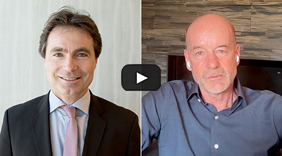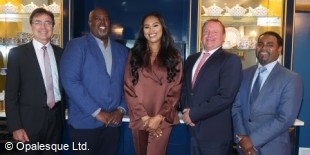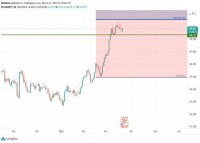|

Pattern Recognition Pioneer
We've wanted to talk with Troy Buckner for a while. In the 10 years or so
since he started NuWave, he made fairly steady and robust annual returns. The
compound rate of return for NuWave Combined Futures Portfolio (2X) is more than
15.5%.
Then in 2008 two notable and conflicting-developments occurred.
Combined Futures Portfolio (2X) returned 52%. But because of the financial
crisis, NuWave became an open âATMâ for clients who scrambled for liquidity as
many hedge funds froze redemptions.
In 2009 Mr. Buckner's long-term track record drew recognition and he
received two awards from HFM Week. Combined portfolio took the top spot in the
CTA category while a separate high-frequency equity fund was first among
newcomer equity funds. NuWave assets recovered and are around $685
million.
Here he explains his distinct pattern recognition strategy, which
underpins both the flagship combined portfolio and the newer equity fund, and
discusses the roller-coaster of the past two years.
Troy Buckner, "When trends are not evident or there are turning points,
NuWave can hold opposite positions to trend followers."
Opalesque Futures Intelligence: How did you get into futures trading?
Troy Buckner: I started my career with a broker's perspective in 1986 at
the futures and options department of Salomon Brothers, where I generated ideas
for clients. Later, my responsibilities expanded to equities and portfolio
trades for large clients. After three years there, I left the firm for a
proprietary trading position, primarily in commodity futures. This was a change
from what I did at Salomon Brothers, where I focused on financial futures.
OFI: Why did you prefer to trade commodities?
TB: I found it easier to hedge my risks with spread trading, like
gasoline versus heating oil or heating oil versus crude. In addition to seasonal
spreads, I used calendar spreads such as three-month versus nine-month
contracts.
OFI: What was your strategy?
TB: During the time I traded independently, I developed the pattern
recognition technology we use today. I traded by day to support myself and at
night worked on the intellectual capital that is now the basis of NuWave's
trading. When I launched NuWave 10 years ago, I applied the basic model and
software to diversified markets, including stocks as well as financial and
commodity futures.
OFI: What is pattern recognition?
TB: Our model generates probabilistic forecasts based on patterns in
prices. We forecast weeks or months ahead whether a price will be higher or
lower, and with what probability, to determine whether we should risk capital.
This methodology was novel at the time we developed it in the 1990s. It was
nowhere to be found.
OFI: Is this similar to trend following?
TB: There is common ground. What we share is a focus on persistent
directional moves, looking for moves that diverge from the mean, which is
another way to say that we trade trends. If there are strong directional moves,
the industry will tend to converge to our position or we will converge to the
industry position. We have about a 0.5 correlation with trend followers.
OFI: What's the difference?
TB: The difference is how we understand market moves. Trend followers
typically do not forecast. They follow a heuristic process, for instance buying
if the price moves above a 60-day high. By contrast, we don't follow behind
market moves, but rather forecast ahead those moves that have the greatest
probability of occurring. It's a matter of different perspective and timing.
OFI: In 2008, were you long oil during the first half of the year and
short oil in second half. like everybody?
TB: Our perspective does not imply participation in a trend at any price.
When trends are too strong, the risk can be too high. While crude oil rose to
$145 in '08, we were out of oil at $118 because we lost faith in the ability of
that trend to continue. Our two-to-three month forecast was a lower price. For a
significant time we were on sidelines, but we started very early on to move into
short trades in energy and grains. That was in June 2008. As a result, in July
and August â08 we made big gains while trend followers were still long oil and
lost money as the trend reversed. Eventually the industry converged to our
position.
OFI: Are you a contrarian?
TB: Not typically. But we can disagree as to whether to be exposed to a
trend and the likelihood of a correction. We continually forecast directional
opportunity. When that directional forecast is powerful, it indicates a high
probability of continuation. When the direction wanes, we exit our position
because there is higher probability of correction. We don't want to stand in
front of the trend and take the opposite position at that stage, but we will
exit, as we did the long oil trade in June '08. At that time we were flat and
moved toward being slightly short, although we don't seek contrarian trades.
OFI: How do investors categorize NuWave's futures portfolio?
TB: We are often grouped with trend followers, but we're rather unique
within that category. When trends are not evident or there are turning points, NuWave can hold opposite positions to trend followers. Like many CTAs we did
very well in 2008, but we had a negative correlation with certain CTAs, some of
whom have the largest assets under management. Our monthly return profile was
different. We all had a very good year, but approached the problem differently.
OFI: What happened in 2009?
TB: We followed our best year ever with our worst year ever, but
fortunately the upside was over six times the downside. In 2009, we experienced
a headwind for our style across multiple sectors due to choppiness and a lack of
direction in many markets. There had been significant downward trends in
equities, commodities and the US dollar; followed by a ricochet off the lows.
That was a painful transition. By mid-year trends were in place, but, except for
equities, you were mostly chopping back and forth. The dollar and energy were
very difficult to trade. Only equities had the type of moves that we profit
from. Your return depended upon how early you got into the long equity trade,
but for most diversified CTAs that was not enough to carry the entire portfolio.
OFI: Is the 2009 pattern continuing in 2010?
TB: So far, yes. Commodities, energy in particular, are very choppy. But
the stronger dollar looks like an emerging trend. Since November we've thought
that markets are very stretched and subject to correction. Equities are up
hugely from their March lows and energy has doubled. Though choppy, markets
still had significant overall moves. We're happy to be less exposed during the
past three months.
OFI: What do you see looking forward?
TB: We anticipated the corrections that happened early this year. I think
that several sectors -equities, bonds, energy - are still not clear of
speculative excess and there is still significant risk. But after the
corrections, the latter part of this year should offer very good return
opportunities.
"We applied the same theory and pattern recognition modeling to
high-frequency equity tradingâŚ"
OFI: Has your approach changed in the 10 years since you started
NuWave?
TB: Our philosophy has not changed, but the models do evolve. The NuWave
Combined Futures Portfolio consists of three sub-portfolios, each with a
different time horizon-referred to as Alpha (long-term), Pattern Pecognition
(intermediate-term) and Beta (short-term). We could have offered these three as
separate products, but because they complement each other well and have low
correlation to each other, we offer a blend that exhibits the most compelling
risk-adjusted returns during a variety of market environments. Over time, we
developed variants of each, so now the combined portfolio has 33 sub-strategies.
It is all systematic, including the risk overlay.
OFI: How does the risk overlay work?
TB: Our three main sub-portfolios operate independently of one another.
You can think of them as separate managers. At times they may take similar
positions. The individual strategies do not recognize macro factors, such as
markets becoming highly correlated with each other. The overlay steps in when
analysis indicates that the environment is overly risky. It reviews net
positions created by individual strategies and can reject certain trades that
might exacerbate the overall risk to the portfolio. These past three months the
overlay has been very restrictive and caused our margin exposure to be half of
our norm.
OFI: Does the short-term sub-portfolio use high-frequency trading?
TB: No, but we have a separate long/short strategy that trades individual
US stocks, not futures, that is high frequency. We applied the same theory and
pattern recognition modeling to high-frequency equity trading to develop a
market-neutral strategy. This portfolio started equities only trading in
February 2007, and now has a three-year track record. It is relatively small -
about $55 million, compared to the $630 million in the Combined Futures
Portfolio - but growing. The performance is exceptional, with a 1.64 Sharpe
ratio. Initially, we thought the business would grow more on the equity side
than in futures, but as it turned out the futures side grew more quickly.
OFI: Is this a statistical arbitrage strategy?
TB: No, as in our futures portfolio, the style benefits from directional
markets with some volatility. The past three years were favorable for this
approach. For instance, Aug 2007 was a very difficult month for statistical
arbitrage, but our best month ever! We were able to capture the dislocation that
month in both directions. NuWave's Long/Short Portfolio is slightly negatively
correlated with the HFR market neutral index-unlike many market neutral
managers, we tend not to focus on mean reverting opportunities but on divergence
from recent prices.
OFI: Did you need new trading capabilities for high-frequency trading?
TB: We've had fully automated trading since 2001. It has recently become
much more fashionable, but it's not a new thing for us.
OFI: Have investors' attitudes toward managed futures changed?
TB: CTAs have become more sophisticated and accepted as part of the
alternative investment pie. Institutions, in particular public and private
pensions, have become active in this space. But we are subject to the vagaries
of the general environment. In the 2008 financial crisis, people took their
money out despite the favorable return environment experienced by many CTAs!
While it was bitter-sweet to see money going out the door, we saw the flip side
of that in 2009 and experienced a good opportunity to raise capital.
| 




 RSS
RSS












